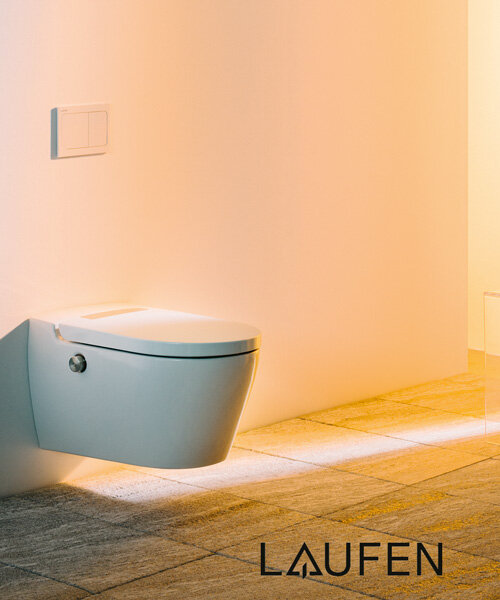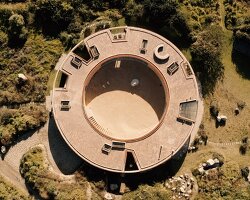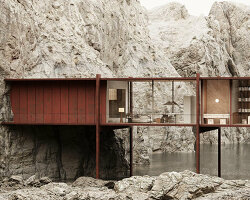‘on the water’s edge’ marks artist james casebere’s eighth solo exhibition with new york’s sean kelly gallery. with this new series of surreal imagery, casebere continues to investigate the intersection of architecture, sculpture, and photography. while the artist has previously depicted buildings and interiors recalling primarily extant structures, this series is distinguished by a more intrinsically conceptual approach. with this ‘constructed photography,’ casebere becomes the architect, designing, physically crafting, and photographing each fictional structure. ‘on the water’s edge’ will show at sean kelly gallery in new york until january 25th, 2020.

santa teresa white duplex, 2019
image courtesy of the artist and sean kelly, new york | © james casebere
with ‘on the water’s edge,’ james casebere projects an imminent speculative future which sees human ingenuity in the face of environmental ruin. structures of bold geometries are rendered in a rich and vibrant palette, appearing both concrete and abstract. with a sense of optimistic adaptation, the artist acknowledges this vague future, insisting that we ‘can’t afford to throw our hands up in resignation.’ alongside its showing at new york’s sean kelly gallery, the exhibition will open at galerie templon in paris on january 11th, 2020. designboom speaks with james casebere about his design process with the series ‘on the water’s edge.’

brutalist house on water, 2019
image courtesy of the artist and sean kelly, new york | © james casebere
designboom (DB): can you speak to the timeliness of your work as is relates to architecture, landscape, and climate change?
james casebere (JC): my interest in architecture and landscape has always been there and now — our greatest challenge is to deal with the climate crisis, so my work simply takes this into consideration.

orange house on water, 2019
image courtesy of the artist and sean kelly, new york | © james casebere
DB: with this latest body of work, you mention ‘a quiet optimism in the face of catastrophe.’ what key methods or elements of your constructed photography best serve to inspire optimism?
JC: I think the temporal nature of the constructions has always been in part about the transitory nature of our lives. I am interested in our ability to change reality, imagine, and create alternate futures without being fatalistic. we create our own realities, socially, collectively, and individually, psychologically etc.., and need to view ourselves as free to construct a new reality, in as much as we have created the one we are have now. this means personally, as well as collectively.
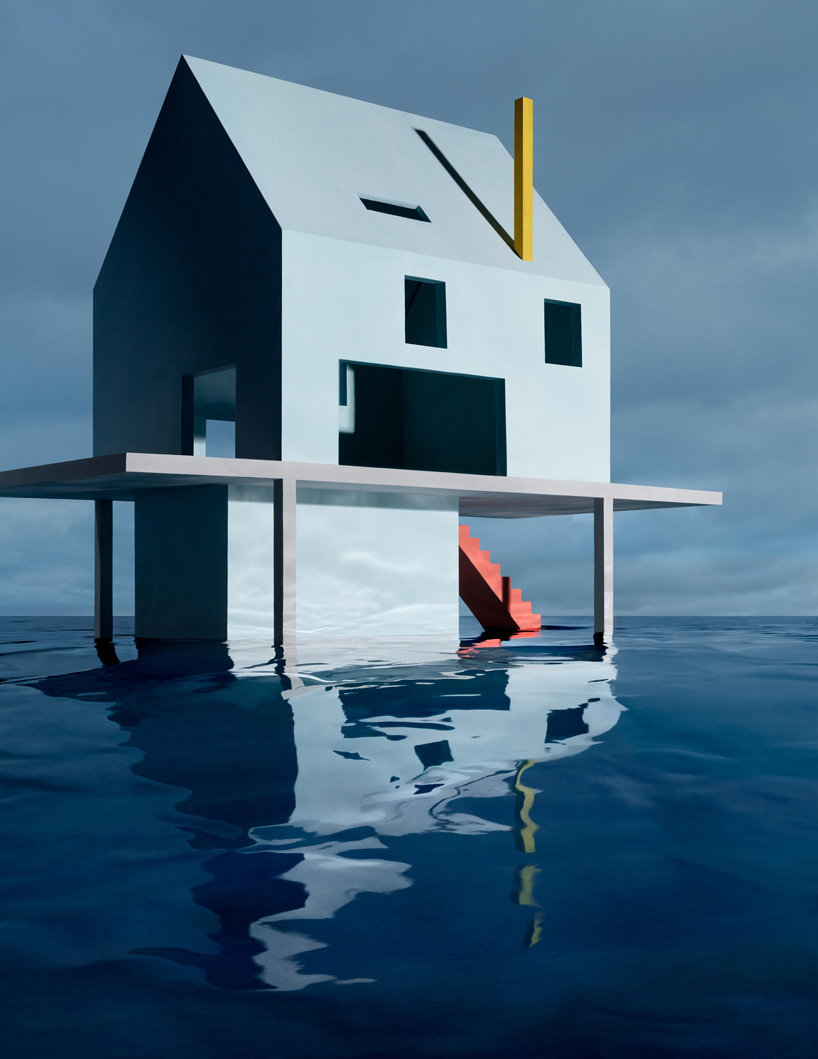
blue house on water #2, 2018
image courtesy of the artist and sean kelly, new york | © james casebere
DB: can you comment on the relevance of the sanctuary versus the abandoned space?
JC: I do not look at any of these as abandoned spaces. I look at them as potential sanctuaries, awaiting utilization.
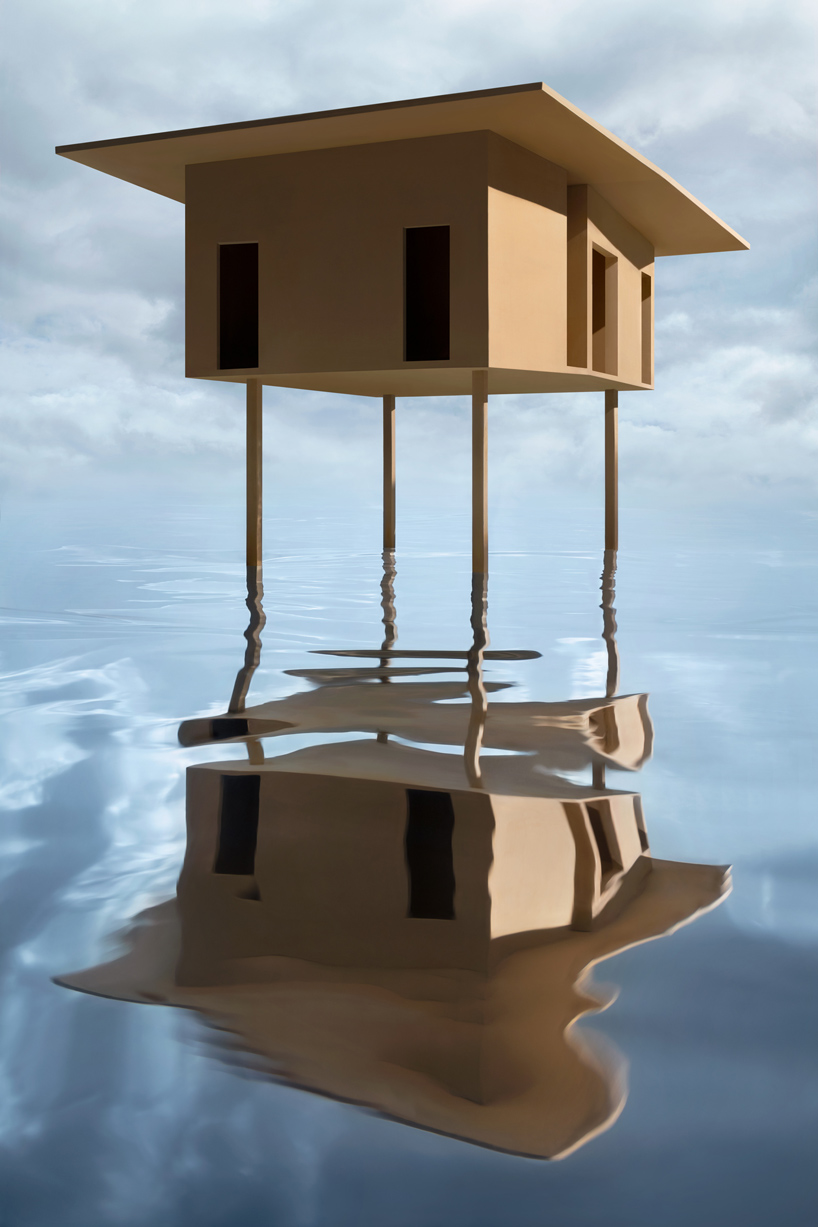
tan house on stilts, 2019
image courtesy of the artist and sean kelly, new york | © james casebere
DB: when photographed at that level of detail, what is the most important part of the physical process of model making?
JC: the proportions and design of the building itself first of all, and then the relationship to the backdrop, lighting, and reflection, as well as the sky which I shoot separately and drop in later.

red/orange solo pavilion, 2018
image courtesy of the artist and sean kelly, new york | © james casebere
DB: can you explain the design process of your models? what factors inform the initial architectural design of these spaces?
JC: I am interested in changing the context and simplifying the structure of architecture that I become enamored of. I’m interested in the historical context, the lifestyle, and in some cases the myth of a back to nature aesthetic, as promoted at a particular moment in time. basically, I love building, and am influenced by many different architects and architectural principles. now, as I contemplate actually designing structures from scratch, just given the trajectory of my work, I have been exploring issues of structure and material, and for the first time thinking about the contributions of engineering.

image by jason wyche, courtesy of sean kelly, new york
JC (cont.): louis barragán continued to have sway over me as I dealt with clean lines, and color, which influenced the first blue house on water. I applied color to an early hertzog and demeuron archetype of a house in blue house #2, albeit somewhat destill. paul rudolf’s florida houses influenced several images, because of a certain back to nature utopianism, and innovative use of lightweight cutting-edge materials, and design. the yellow houses on water and the flooded street all reflect a certain generic contemporary tropical modernism, found in mexico and central america.

image by jason wyche, courtesy of sean kelly, new york
JC (cont.): as I started to think about geometric structures and modular units on the edge of the sea, I simplified and borrowed from a costa rican firm named studio saxe. the brutalist image actually reflects my thinking more generically about form, volume, proportions, and containers for space. I am of course playing around with forms, color, and structure in the context of a changing environment.

image by jason wyche, courtesy of sean kelly, new york
DB: what different challenges relate to photographing interior versus exterior spaces?
JC: the interior spaces that I have been making are more abstract. I think about the modernist phrase ‘space as god.’ the exteriors are more like objects in space — in the center of the frame, surrounded by a landscape, and reflected and distorted in water. the structure is more about the brain and the setting the senses.

image by jason wyche, courtesy of sean kelly, new york

image by jason wyche, courtesy of sean kelly, new york

image by jason wyche, courtesy of sean kelly, new york
installation info:
title: on the water’s edge
artist: james casebere
gallery: sean kelly gallery, new york
dates: december 13th, 2019 — january 25th, 2020
installation photography: jason wyche

